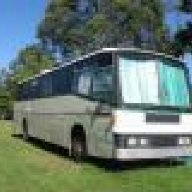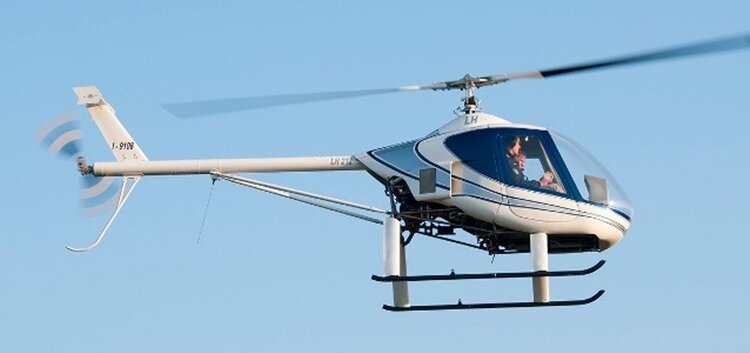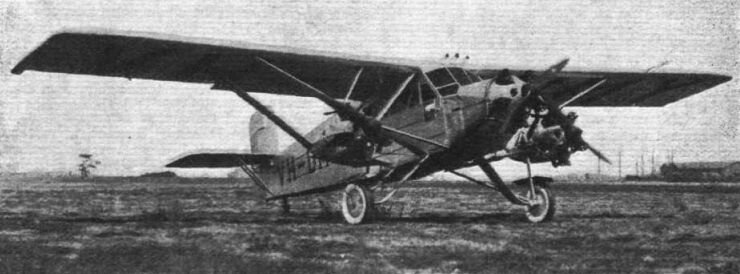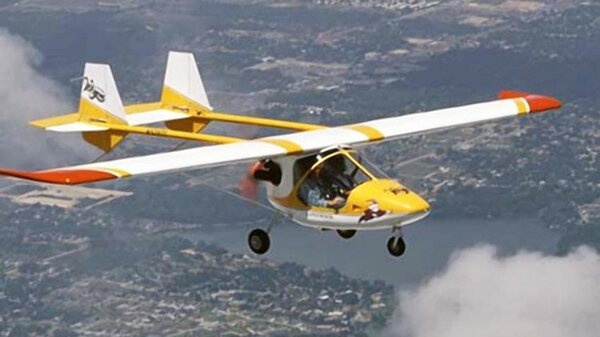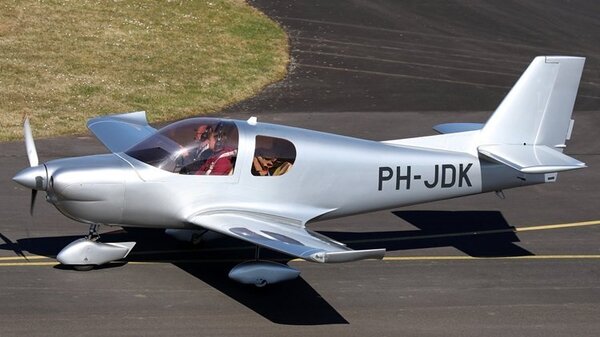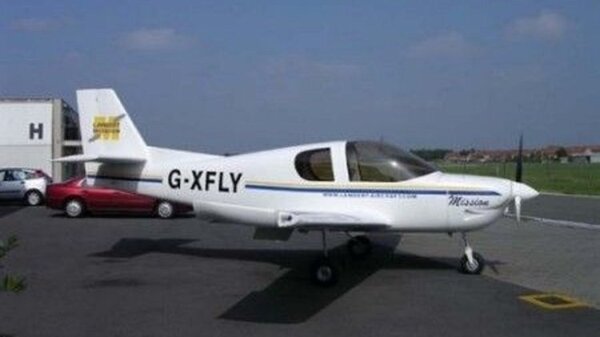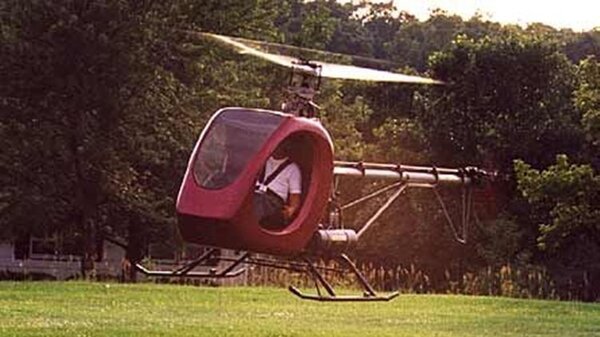-
Posts
7,701 -
Joined
-
Last visited
-
Days Won
67
red750's Achievements

Well-known member (3/3)
-
https://www.msn.com/en-au/news/other/10-very-ugly-french-aircraft/ss-AA1GaKCB?ocid=winp2fptaskbar&cvid=7b05a0a7871e46c68c58562bd0c0bb34&ei=177#image=1
-
The LCA LH 212 Delta is a two-seat Italian piston engine ultralight helicopter first flown in 2010. Though strong similarities between the Delta and another Italian helicopter, the 1989 DF Helicopters DF334, have been noted, it is not clear if there are direct relationships between either the machines or their makers. The Delta made its first flight after eight years of development. The Delta has a standard pod and boom layout, the latter high set, slender and braced with a narrow angle V-form strut pair to its halfway point from bottom of the pod. It has a short span tailplane with small endplate fins raised above the boom on a swept, high aspect ratio fin, forming a T-tail. The tail rotor, mounted on the starboard side of the boom, has its two blades protected from ground strikes by a long, curved tubular bumper. The pod seats two side-by-side behind a full clear forward transparency. Its skin is carbon fibre over a titanium alloy tube frame. Tandem controls are fitted, with two sets of anti-torque pedals and a T-shaped cyclic control centrally mounted on a console; the single collective pitch lever is placed between the seats. A governor sets the throttle in the absence of pilot input and trim is applied electrically. Small baggage can be stored in under seat lockers. Cabin access is through forward hinged doors in each side. A 84.5 kW (113 hp) Rotax 914 turbocharged, liquid cooled, flat four piston engine with narrow rectangular cheek radiators is mounted behind the seats and partly exposed at the rear, driving a two blade main rotor. The helicopter lands on skids, transversely braced by a pair of airfoil section struts and positioned below the pod on two pairs of similar outward leaning struts, producing a skid track of 1.585 m (5 ft 2 in). The first flight was in 2010 and marketing began in September 2011 at the Blois international ultra light show. A year later eleven flyaway examples had been built. A kit build version is planned. Number built: 11 by September 2012.
-
The Lasco Lascondor (also frequently known by the misspelling "Lasconder") was a 1930s Australian 8-seat passenger and mail carrier aircraft built by the Larkin Aircraft Supply Company (Lasco) at Coode Island, Victoria. It is claimed to be the first multi-engined aircraft designed and built in the Southern Hemisphere. Development of the Lascondor began in June 1928, concurrently with the company's Lascoter; the two aircraft had 90% commonality of structural parts. Like the Lascoter the Lascondor was a high-wing monoplane with a tubular steel structure, featuring a tailwheel undercarriage and a fully enclosed cabin for the passengers and the pilot. A major change was the Lascondor's three Armstrong Siddeley Mongoose engines instead of the Lascoter's single more powerful Siddeley Puma engine. The Lascondor also had greater fuel capacity and a slightly longer fuselage with a redesigned cabin to accommodate an extra row of seats. In addition, while the Lascoter had two sets of flying controls in the cockpit the Lascondor had only one to allow for another passenger seat, giving an overall capacity of seven passengers and one pilot. The only available photo of the Lascondor.
-
The Laron Wizard is an American homebuilt aircraft produced by Laron Aviation Tech of Borger, Texas. When it was available the aircraft was supplied as a kit for amateur construction. The Wizard features a strut-braced high-wing, a twin-boom tail layout, a two-seats-in-side-by-side configuration enclosed cockpit, fixed tricycle landing gear, with a tail skid, and a single engine in pusher configuration. The aircraft is made from a combination of bolted-together aluminum tubing and fiberglass, with its flying surfaces covered doped aircraft fabric. Its 30.50 ft (9.3 m) span wing, mounts flaps and has a wing area of 140.0 sq ft (13.01 m²). The wing is supported by a single lift strut and jury strut per side. The acceptable power range is 64 to 80 hp (48 to 60 kW) and the standard engines used are the 64 hp (48 kW) Rotax 582, the 74 hp (55 kW) Rotax 618 or the 65 hp (48 kW) Hirth 2706 two stroke powerplants or the 80 hp (60 kW) Rotax 912UL four stroke engine. With the Rotax 582 engine the Wizard has a typical empty weight of 462 lb (210 kg) and a gross weight of 925 lb (420 kg), giving a useful load of 463 lb (210 kg). With full fuel of 10 U.S. gallons (38 L; 8.3 imp gal) the payload for pilot, passengers and baggage is 403 lb (183 kg). The manufacturer estimated the construction time from the supplied kit as 450 hours. By 1998 the company reported that 240 kits had been sold and 220 aircraft were completed and flying.Despite this, a search of most major aircraft photo sites, including jetphotos.com, airliners.net and airport-data.net. only one example could be found on the Russian site airwar2.ru. The image is shown below-
-
The Lambert Mission 212 is a conventionally laid out low-wing, fixed undercarriage, single-engine, four-seat kit built aircraft designed in the UK by a Belgian college student. Kits are manufactured in Belgium. The M212 has had an unusually long gestation time. It was designed in 1992 by Filip Lambert, then a student at the College of Aeronautics, Cranfield, and was selected as one of three winners of the Royal Aeronautical Society Light Aircraft Competition in 1995. Construction of the M212-100 prototype began in 1996. This aircraft was registered in the UK in 2000 and was displayed, complete apart from some engine and fuel supply systems, at the Popular Flying Association (PFA) Rally held at Cranfield in June 2002. The first flight, delayed by another two years, took place on 13 April 2004 at Cranfield with Roger Bailey as pilot. The M212 is an all-composite aircraft with 95% of its weight in pre-pregs. The wing has two main spars plus an auxiliary one, all formed from glass and carbon fibre in epoxy resin. In plan the wing is gently straight tapered, with most sweep on the trailing edge and with turned up wingtips. It has 5° of dihedral and 2° of washout. Electrically actuated single slot flaps are fitted. Fin and rudder are swept, with a small dorsal fin; the rudder is horn-balanced. The tailplane is rectangular and set a little above the fuselage, carrying inset elevators. The fuselage is a monocoque construction, tapering strongly to the rear. The cockpit seats four in two rows with dual controls in front, covered by a forward-hinged, single-piece canopy. There are two side windows for the rear seat passengers. The M212 has a fixed tricycle undercarriage, the mainwheels mounted on forward-leaning cantilever legs in narrow chord fairings, attached to the fuselage. The mainwheels have brakes and the nosewheel is steerable. Only 2 examples were built. More details here.
-
The 1958 Lanier Paraplane Commuter 110 or 110 Paraplane Commuter PL-8 was one of the last designs stemming from Edward H. Lanier's 1930s patents, and aircraft incorporating apertures in the upper surfaces, which claimed to give benefits in safety, lift and STOL ability. In the early 1930s Edward H. Lanier published six US patents concerned with increased aircraft lift and stability, minimising the stall, sideslip and spin. This was to be achieved through vacuum chamber ("Vacua-cells"), initially in the upper fuselage but later in the upper wing, where the reduced pressure established by airflow over a curved surface would act on the lower surface inside the cell, providing lift. The second patent suggests that the cell should contain angled spanwise slats to prevent air entering them at low speeds and that these should be adjustable so that the cells could be closed when required. The earlier patents stress stability improvements; claims of enhanced lift begin with the fourth patent. Five Lanier Vacuaplanes were built in the 1930s, followed by three Paraplanes from about 1948, before the Paraplane Commuter 110 which first flew in 1958. The Commuter 110 had a wing area of 111 sq ft (10.3 m²), large for its 20 ft 7 in (6.28 m) span, and controllable air entrance slots ("Vacua-Jets") under the lower surface near its leading edge, passing air to the upper surface for boundary layer control. Other details of the upper surface are scarce but photographs appear to show rear hinged, single-piece slats over Vacua-cells as well as narrow open channels next to the fuselage in the very long wing root fairings. Structurally, the cantilever mid wing had strongly cranked inner sections and was tapered in plan with elliptical wing tips. The outer panels carried control surfaces which operated differentially as ailerons and together as flaps. In addition there were split flaps under the trailing edges of the wing roots. More details here.
-
Two model aero clubs in Melbourne's east that I know of, Knox Model Aero Club on Stud Road, Knoxfield, with three control line circles, and Doncaster Aeromodellers Club on Bulleen Road, Bulleen, with one control line circle and a grass runway for RC models. Both can be searched on Google Maps.
-
The Johns Ra-Son Warrior or X-3 Warrior is a low wing bushplane with a large short coupled tail surface. The aircraft has a large tapered low wing, with a large horizontal tail surface mounted close to the trailing edge of the wing and conventional tailwheel landing gear. The fuselage has welded steel tube construction with fabric covering. The wings have fabric-covered wooden ribs and spars. A 1,000 lb (454 kg) payload can be lifted by the 185 hp (138 kW) engine. The five-seat cabin can be converted for cargo operations, and two oversized gullwing cabin doors allow loading. The prototype was built over a four-year period. The aircraft received the Experimental Aircraft Association award for achievement in 1963.
-
An Air India plane plunged 900ft during its flight just two days after the disaster crash that killed 241 people onboard and dozens more on the ground, the airline has revealed. The plane, flying from Indira Gandhi International (IGI) Airport for Vienna, dropped 900ft in midair during a flight on June 14. It landed safely in Vienna following a nine-hour flight, but both pilots onboard have since been grounded pending an investigation by India's air watchdog, the Directorate General of Civil Aviation (DGCA), into the incident, Air India said.
-
https://www.msn.com/en-au/motoring/news/china-s-first-mass-produced-flying-car-debuts/vi-AA1HMzza?ocid=winp2fptaskbarhover&cvid=6039463e2fc74a20ba8b65e00c4c5219&ei=44
-
The Kinney HRH (Hot Rod Helicopter) is an American helicopter that was designed by Robert Kinney and produced by Vortech, Inc in the form of plans for amateur construction. The aircraft was first shown at Sun 'n Fun in 2002. The HRH was designed to comply with the US experimental – amateur-built rules. It features a single main rotor, a single-seat enclosed cockpit with a windshield, skid-type landing gear and a four-cylinder, air-cooled, four-stroke, 165 hp (123 kW) Subaru EJ25 automotive engine. It is the high power to weight ratio that gives the aircraft its name. The aircraft fuselage is made from a mix of welded 4130 steel tube and bolted-together aluminum tubing, with a composite cabin shell. Its 25 ft (7.6 m) diameter two-bladed Waitman composite rotor has a chord of 8 in (20 cm). The tail rotor has a 46 in (117 cm) diameter. The aircraft has an empty weight of 1,000 lb (454 kg) and a gross weight of 1,350 lb (612 kg), giving a useful load of 350 lb (159 kg). With full fuel of 18.5 U.S. gallons (70 L; 15.4 imp gal) the payload is 239 kg (527 lb). The HRH can hover in ground effect at 7,000 ft (2,134 m) and out of ground effect at 5,000 ft (1,524 m). By January 2013 there was one example, the 2001 prototype, registered in the United States with the Federal Aviation Administration.



